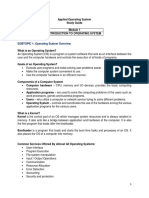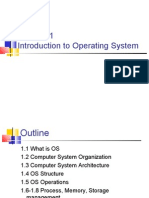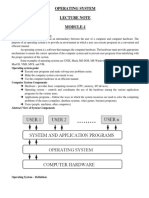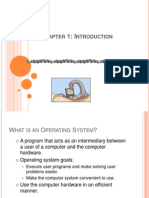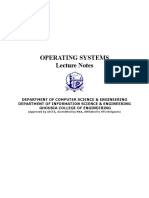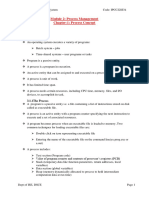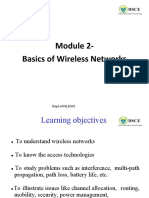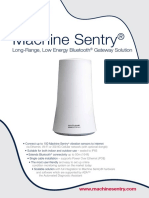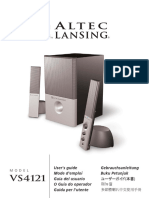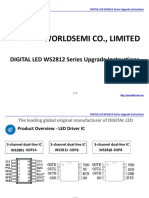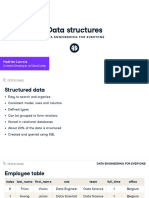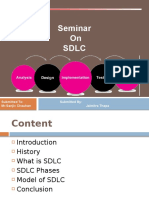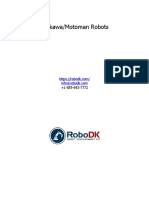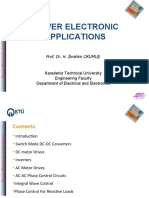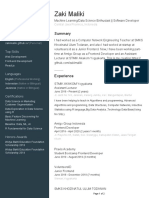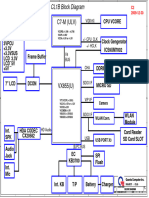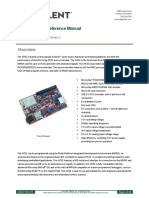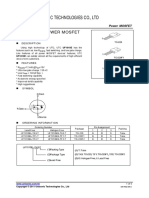0% found this document useful (0 votes)
86 views16 pagesOS-Module 1-Notes
This document provides an overview of operating system structure and functions. It discusses:
[1] Operating system services like user interface, program execution, I/O operations, file system manipulation, communications, error detection, and resource allocation.
[2] System calls allow programs to request services from the operating system. Common system calls include opening/closing files and programs, reading/writing data, and allocating memory.
[3] Operating systems provide dual mode operation to protect the kernel from user programs by distinguishing between privileged kernel mode and unprivileged user mode. System calls cause a transition from user to kernel mode.
Uploaded by
Radhika VenkateshCopyright
© © All Rights Reserved
We take content rights seriously. If you suspect this is your content, claim it here.
Available Formats
Download as DOC, PDF, TXT or read online on Scribd
0% found this document useful (0 votes)
86 views16 pagesOS-Module 1-Notes
This document provides an overview of operating system structure and functions. It discusses:
[1] Operating system services like user interface, program execution, I/O operations, file system manipulation, communications, error detection, and resource allocation.
[2] System calls allow programs to request services from the operating system. Common system calls include opening/closing files and programs, reading/writing data, and allocating memory.
[3] Operating systems provide dual mode operation to protect the kernel from user programs by distinguishing between privileged kernel mode and unprivileged user mode. System calls cause a transition from user to kernel mode.
Uploaded by
Radhika VenkateshCopyright
© © All Rights Reserved
We take content rights seriously. If you suspect this is your content, claim it here.
Available Formats
Download as DOC, PDF, TXT or read online on Scribd
/ 16















